Youth of India & Sustainable Development
CYSD’s Public Lecture Series on ‘Youth Work’
Addressing the audience, Dr.(Prof) Pitabasa Sahoo stated, “Today, 12th August, we are celebrating the International Youth Day globally and I am happy to acknowledge CYSD’s pioneering role in empowering the youth and uplifting the underprivileged communities of Odisha”.
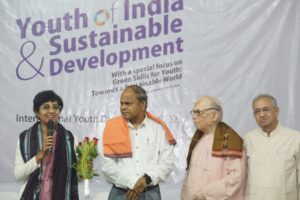 He continued, “India’s ‘demographic dividend’ emerges from its diverse and youthful population, aged approximately 10 to 24, shaping the nation’s future. Addressing challenges in education, employment, and gender equality is vital, with youth engagement being pivotal. Government initiatives like NCC, NSS, and NYKS underscore their significance in nation-building. Through collaboration and action, India’s youth can drive positive change for a promising tomorrow. The government’s commitment to youth development is evident through policies, programs, and collaborative efforts, acknowledging the vital role of the youth in shaping India’s future”.
He continued, “India’s ‘demographic dividend’ emerges from its diverse and youthful population, aged approximately 10 to 24, shaping the nation’s future. Addressing challenges in education, employment, and gender equality is vital, with youth engagement being pivotal. Government initiatives like NCC, NSS, and NYKS underscore their significance in nation-building. Through collaboration and action, India’s youth can drive positive change for a promising tomorrow. The government’s commitment to youth development is evident through policies, programs, and collaborative efforts, acknowledging the vital role of the youth in shaping India’s future”.
He tells us about SDGs, “The United Nations Sustainable Development Goals (SDGs) are 17 interconnected targets aimed at addressing global challenges and creating a sustainable and equitable future for all by 2030. The SDGs build upon the Millennium Development Goals (MDGs) but with a holistic approach and recognition of interconnected challenges. The 17 SDGs include goals like ending poverty, achieving food security, ensuring good health, promoting education, gender equality, clean water, sustainable energy, economic growth, industry and innovation, reducing inequality, sustainable cities, responsible consumption, climate action, ocean and land conservation, peace, justice, and partnerships for sustainable development.”
The ‘youth bulge’ highlights a demographic trend with a large young population, emphasizing the need for youth employment and peace-building. India’s youthful average age of 29 presents a “demographic dividend,” propelling a $5 trillion economy goal. However, challenges like education, employment, and gender inequality must be tackled. Youth contribute as human capital, driving innovation, entrepreneurship, and economic growth. Youth activism drives change for gender equality and environmental conservation. Their critical thinking, innovation, and tech skills enable effective advocacy via digital platforms. The Indian government has launched various schemes and programs for youth empowerment and development:
- Rashtriya Yuva Sashaktikaran Karyakram (RYSK): Through initiatives like Nehru Yuva Kendra Sangathan (NYKS), National Youth Corps (NYC), and National Young Leaders Programme (NYLP), this program aims to foster youth leadership, engagement in nation-building, and personality development.
- National Service Scheme (NSS): Providing opportunities for community service and social development, NSS encourages youth participation in various community projects.
- Rajiv Gandhi National Institute of Youth Development (RGNIYD): Dedicated to youth research and development, RGNIYD focuses on enhancing youth skills and knowledge.
- Green Skill Development Programme: Addressing skill gaps in environmental fields, this program, by the Ministry of Environment, Forests & Climate Change, offers training in areas like wildlife conservation and horticulture. It empowers youth to drive sustainable practices and promote a greener future.
In the transition towards a green economy, green jobs and skills are pivotal. They drive innovation, inclusivity, and sustainable growth while addressing global challenges like climate change. Youth involvement is essential in advocating for a greener world, fostering awareness, innovation, and community engagement. Collaboration between governments, businesses, and individuals is key to creating a resilient and sustainable future.
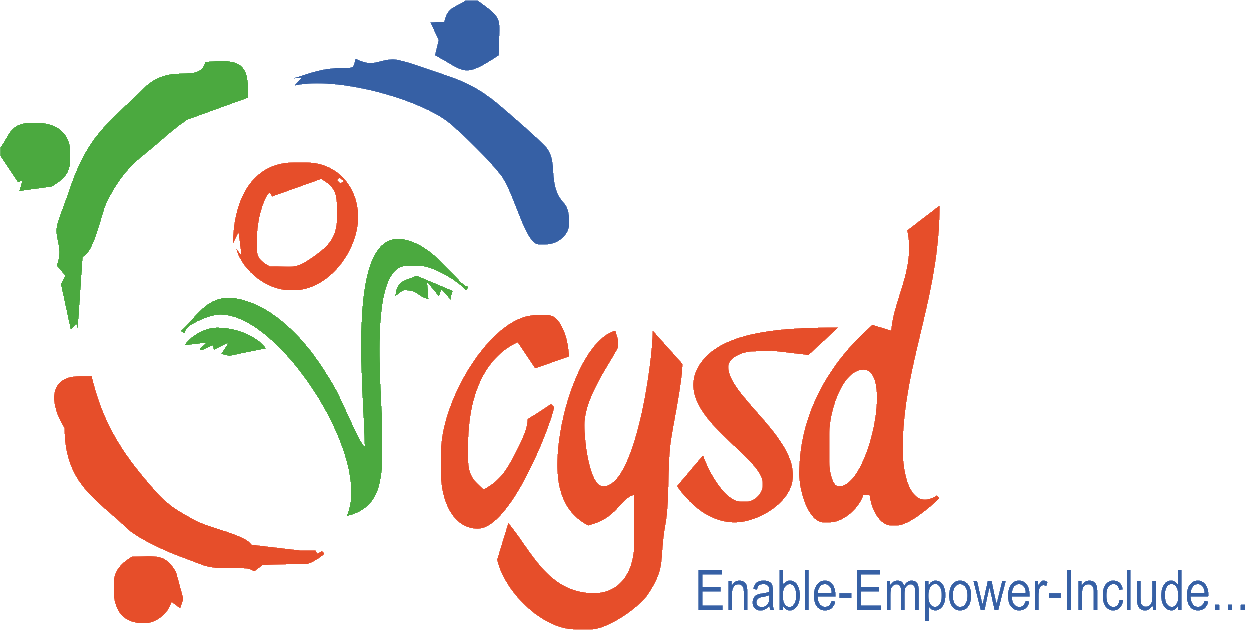
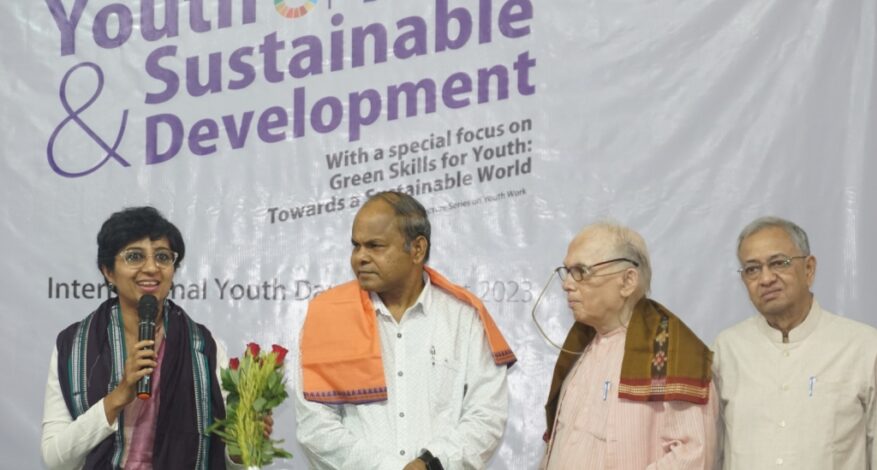

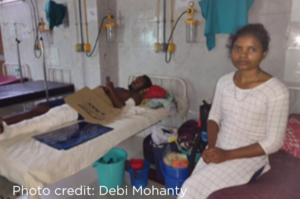 Gautam Kumar, a 17-year-old from the Bihar village of Rasonk, was undergoing treatment at Cuttack’s SCB Medical College and Hospital, accompanied by his mother Nirmala and brother Vikash. Despite having a head injury, Gautam occasionally smiles. Just days before boarding a ‘prestigious’ train to Chennai, he recalls dancing at his brother’s wedding on May 28. Gautam had received the highest marks in his intermediate exam, and in September, he hoped to move to Patna for coaching. He had plans to work as a daily wage laborer, save money, and spend his weekly days off visiting Chennai’s most popular sites before he began pursuing more serious studies.
Gautam Kumar, a 17-year-old from the Bihar village of Rasonk, was undergoing treatment at Cuttack’s SCB Medical College and Hospital, accompanied by his mother Nirmala and brother Vikash. Despite having a head injury, Gautam occasionally smiles. Just days before boarding a ‘prestigious’ train to Chennai, he recalls dancing at his brother’s wedding on May 28. Gautam had received the highest marks in his intermediate exam, and in September, he hoped to move to Patna for coaching. He had plans to work as a daily wage laborer, save money, and spend his weekly days off visiting Chennai’s most popular sites before he began pursuing more serious studies.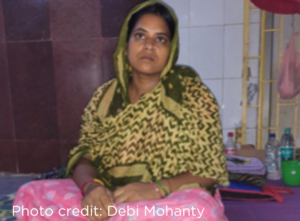 On the other side of this heartbreaking story, we come across Bulti Khatoon, a wife who has spent 20 days next to her unconscious husband, Sk Khokan, in the neurosurgery ICU of Cuttack’s SCB Medical. She was temporarily living on the hospital floor, with a bedsheet as a bed and a plastic bag as a pillow, this represents her will to overcome this challenge. Khokan is one of the severely hurt passengers from the same train accident on June 2.
On the other side of this heartbreaking story, we come across Bulti Khatoon, a wife who has spent 20 days next to her unconscious husband, Sk Khokan, in the neurosurgery ICU of Cuttack’s SCB Medical. She was temporarily living on the hospital floor, with a bedsheet as a bed and a plastic bag as a pillow, this represents her will to overcome this challenge. Khokan is one of the severely hurt passengers from the same train accident on June 2.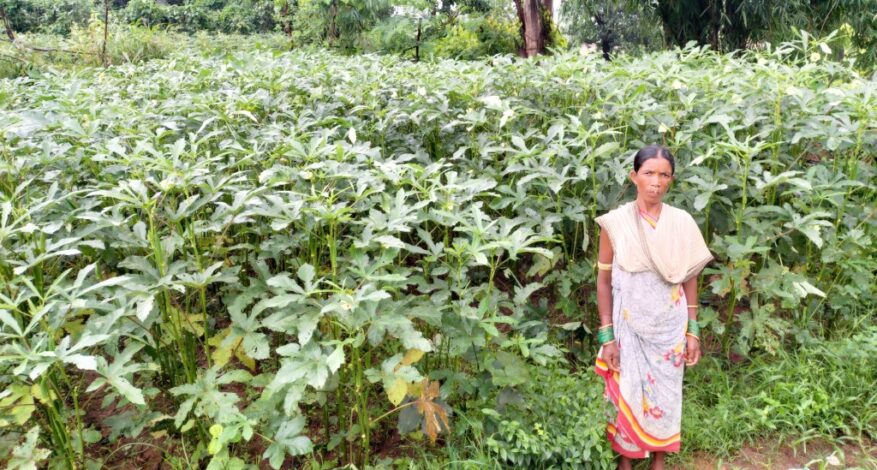
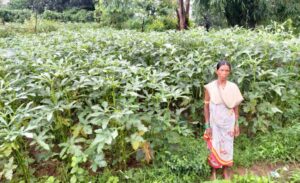 Buddhai Bhumia, a 35-year-old woman farmer from one of these 20 households, has been practicing NPM for the past five years on her three-and-a-half acres of farmland. Along with her husband, Gobardhana Bhumia, they manage to harvest two crops annually. The first crop is paddy, and the second consists of various vegetables such as Lady Finger, Beans, Chili, Cauliflower, and Cabbage, which cover half an acre of their land. They sow paddy in two acres and cultivate millet in the remaining one acre. Buddhai Bhumia shared, “In our three-and-a-half acres of land, we cultivate vegetables on half an acre, sow paddy on two acres, and grow millet on the remaining one acre.”
Buddhai Bhumia, a 35-year-old woman farmer from one of these 20 households, has been practicing NPM for the past five years on her three-and-a-half acres of farmland. Along with her husband, Gobardhana Bhumia, they manage to harvest two crops annually. The first crop is paddy, and the second consists of various vegetables such as Lady Finger, Beans, Chili, Cauliflower, and Cabbage, which cover half an acre of their land. They sow paddy in two acres and cultivate millet in the remaining one acre. Buddhai Bhumia shared, “In our three-and-a-half acres of land, we cultivate vegetables on half an acre, sow paddy on two acres, and grow millet on the remaining one acre.”
 In a shift from traditional forest-based livelihoods to agriculture, tribal communities have transitioned towards cultivating cash crops, notably vegetables. The CYSD intervention has actively encouraged farmers to embrace year-round cultivation of cash crops, with Monsoon potato cultivation being a prime example of success in the Kashipur block during 2021 with collaboration with the District Horticulture Department. Among the beneficiaries, Subhasanti Majhi, aged around 45, and wife of Sadasiba Majhi, is a small-holder farmer residing in Pondkapadar village within Dongasil GP of Kashipur Block in Rayagada district. She is one of the 125 farmers who received 50 Kg of potato seeds from the Horticulture Department, with CYSD’s assistance. This support empowered her to venture into potato farming on a small, sloped plot of land After attending a village-level meeting organized by CYSD, Subhasanti embarked on the journey of monsoon potato cultivation. Despite initial nervousness due to the novelty of farming potatoes during the monsoon, she successfully navigated the process with guidance from the CYSD project team. Planting 51 Kg of potato seeds on July 18th, she overcame challenges posed by continuous rain and waterlogging. While several fellow villagers suffered complete crop losses, her strategically sloped land and effective farming practices enabled her to yield around 290 Kg of potatoes. Her achievements have sparked interest among other Self-Help Group (SHG) members in her village and nearby areas.
In a shift from traditional forest-based livelihoods to agriculture, tribal communities have transitioned towards cultivating cash crops, notably vegetables. The CYSD intervention has actively encouraged farmers to embrace year-round cultivation of cash crops, with Monsoon potato cultivation being a prime example of success in the Kashipur block during 2021 with collaboration with the District Horticulture Department. Among the beneficiaries, Subhasanti Majhi, aged around 45, and wife of Sadasiba Majhi, is a small-holder farmer residing in Pondkapadar village within Dongasil GP of Kashipur Block in Rayagada district. She is one of the 125 farmers who received 50 Kg of potato seeds from the Horticulture Department, with CYSD’s assistance. This support empowered her to venture into potato farming on a small, sloped plot of land After attending a village-level meeting organized by CYSD, Subhasanti embarked on the journey of monsoon potato cultivation. Despite initial nervousness due to the novelty of farming potatoes during the monsoon, she successfully navigated the process with guidance from the CYSD project team. Planting 51 Kg of potato seeds on July 18th, she overcame challenges posed by continuous rain and waterlogging. While several fellow villagers suffered complete crop losses, her strategically sloped land and effective farming practices enabled her to yield around 290 Kg of potatoes. Her achievements have sparked interest among other Self-Help Group (SHG) members in her village and nearby areas.
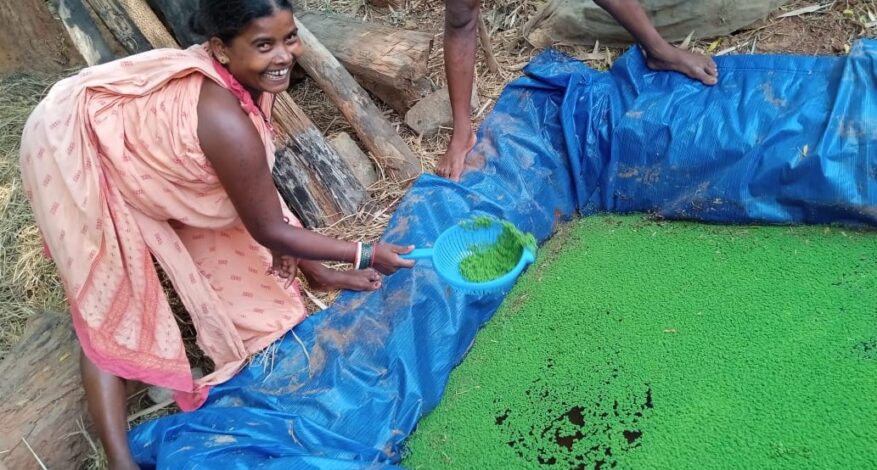
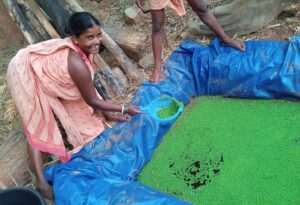 With assistance from the Veterinary Department, these 25 families have received Azolla saplings along with Rs. 1,500/- for each family to establish an Azolla pit. The process involves filling the pit with water and allowing the saplings to grow for 15 days. Once Azolla is fully grown, a portion remains in the water while the rest is mixed into the fodder for cattle and goats. This not only reduces the cost of buying livestock feed but also fosters community building and interdependency.
With assistance from the Veterinary Department, these 25 families have received Azolla saplings along with Rs. 1,500/- for each family to establish an Azolla pit. The process involves filling the pit with water and allowing the saplings to grow for 15 days. Once Azolla is fully grown, a portion remains in the water while the rest is mixed into the fodder for cattle and goats. This not only reduces the cost of buying livestock feed but also fosters community building and interdependency.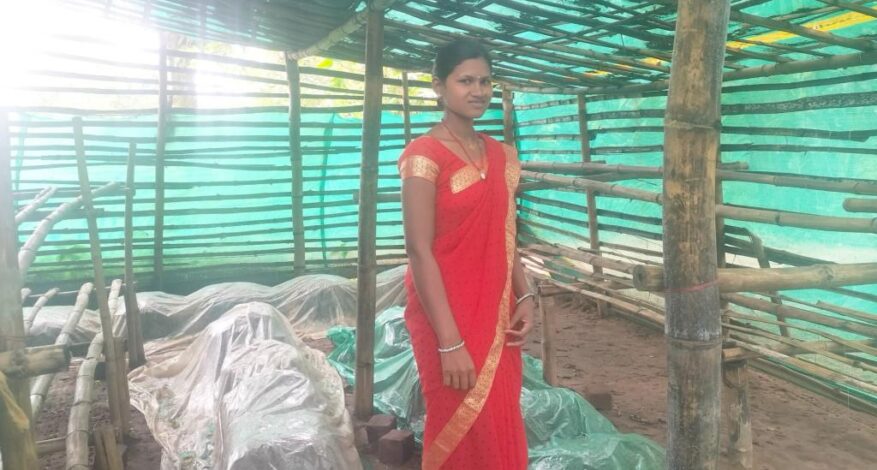
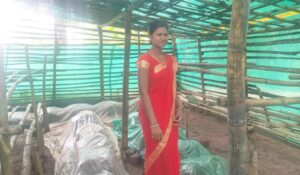 In the remote areas of Kosagumuda Block in Nabarangpur District, there is a village called Udanguda in the Motigaon Gram Panchayath. With 40 households, due to a lack of knowledge about other livelihood opportunities, they have relied solely on agriculture. However, because there is no proper irrigation facility, they can only harvest one crop per year. During the non-farming season, they turn to Non-Timber Forest Products (NTFP) to earn a living. Sustainable livelihood generation has been a major problem in villages like Udanguda. The lack of education and awareness about diversifying livelihood opportunities has made it difficult for these people to meet their basic needs. To help them earn a stable and profitable living, CYSD has launched the South Odisha Livelihood Program. Under this initiative, the people of Udangudi have been introduced to mushroom cultivation. Three women Self-Help Groups (SHGs) from the village have been identified and provided with training in mushroom cultivation through a collaborative approach with NABARD.
In the remote areas of Kosagumuda Block in Nabarangpur District, there is a village called Udanguda in the Motigaon Gram Panchayath. With 40 households, due to a lack of knowledge about other livelihood opportunities, they have relied solely on agriculture. However, because there is no proper irrigation facility, they can only harvest one crop per year. During the non-farming season, they turn to Non-Timber Forest Products (NTFP) to earn a living. Sustainable livelihood generation has been a major problem in villages like Udanguda. The lack of education and awareness about diversifying livelihood opportunities has made it difficult for these people to meet their basic needs. To help them earn a stable and profitable living, CYSD has launched the South Odisha Livelihood Program. Under this initiative, the people of Udangudi have been introduced to mushroom cultivation. Three women Self-Help Groups (SHGs) from the village have been identified and provided with training in mushroom cultivation through a collaborative approach with NABARD.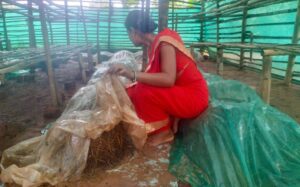 At present, 30 women from three SHGs have embarked on mushroom cultivation and are earning a very profitable source of income. Instead of relying on NTFPs during the non-agricultural seasons, these women farmers are now making a significant contribution to their household income, averaging around ₹14,000 annually. Each of these three Self-Help Groups consists of 10 members. Over the past seven months, each member has set up between 25 to 30 straw beds for mushroom cultivation. Depending on the type of mushroom being cultivated, each of these beds can yield 2 to 3 harvests. Every harvest typically produces mushrooms with a total weight of around 1 kilogram. In the market, each kilogram of mushrooms is valued at approximately ₹270 to ₹300. Considering the investment required to prepare the straw and procure the spawns for 30 beds, which amounts to ₹1,800, the returns are usually 9 to 10 times higher than the initial investment.
At present, 30 women from three SHGs have embarked on mushroom cultivation and are earning a very profitable source of income. Instead of relying on NTFPs during the non-agricultural seasons, these women farmers are now making a significant contribution to their household income, averaging around ₹14,000 annually. Each of these three Self-Help Groups consists of 10 members. Over the past seven months, each member has set up between 25 to 30 straw beds for mushroom cultivation. Depending on the type of mushroom being cultivated, each of these beds can yield 2 to 3 harvests. Every harvest typically produces mushrooms with a total weight of around 1 kilogram. In the market, each kilogram of mushrooms is valued at approximately ₹270 to ₹300. Considering the investment required to prepare the straw and procure the spawns for 30 beds, which amounts to ₹1,800, the returns are usually 9 to 10 times higher than the initial investment.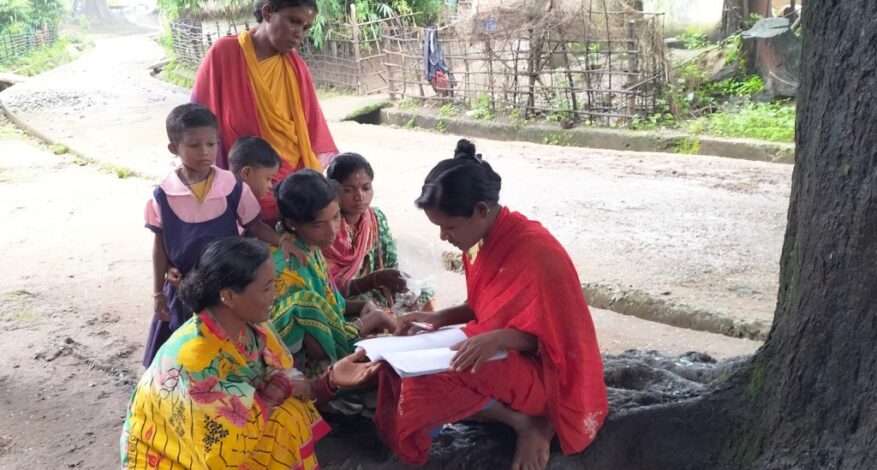
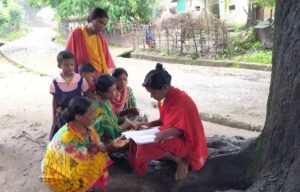 CYSD, through its intervention, has promoted a Producer Group comprising 7 Self-Help Groups (SHGs) in the village, named Ma Tulasi. These SHGs empower women from these rural tribes to become independent and financially stable. In March of this year, Adisakthi SHG and Gramadevi SHG, out of the seven, came up with a collaborative idea to establish a vegetable nursery. The Watershed project in the area has provided each SHG with financial support of ₹25,000.
CYSD, through its intervention, has promoted a Producer Group comprising 7 Self-Help Groups (SHGs) in the village, named Ma Tulasi. These SHGs empower women from these rural tribes to become independent and financially stable. In March of this year, Adisakthi SHG and Gramadevi SHG, out of the seven, came up with a collaborative idea to establish a vegetable nursery. The Watershed project in the area has provided each SHG with financial support of ₹25,000.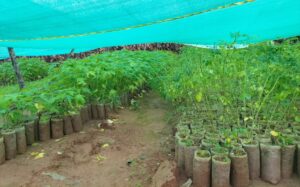 Dauna Majhi, the president of Gramadevi SHG, explained that they cultivate seedlings such as Guava, Papaya, Chili, Drumstick, Tomatoes, and Brinjal. She emphasized that the nursery is helping them generate income, which is being used for the development of their SHGs and to support their livelihoods
Dauna Majhi, the president of Gramadevi SHG, explained that they cultivate seedlings such as Guava, Papaya, Chili, Drumstick, Tomatoes, and Brinjal. She emphasized that the nursery is helping them generate income, which is being used for the development of their SHGs and to support their livelihoods In the remote areas of Koraput District, specifically in the Dandabadi Gram Panchayath, there is a village called Padapadar with around 60 households. The primary issue in this village is the deeply entrenched problem of child marriage. No one in this village remains unmarried beyond the age of 17, and typically, marriages occur as early as age 15. There are two major reasons why this social problem continues to persist: i) Parents lack awareness regarding the importance of education, adolescent health, and menstrual health; and ii) The absence of a proper education system results in high dropout rates.
In the remote areas of Koraput District, specifically in the Dandabadi Gram Panchayath, there is a village called Padapadar with around 60 households. The primary issue in this village is the deeply entrenched problem of child marriage. No one in this village remains unmarried beyond the age of 17, and typically, marriages occur as early as age 15. There are two major reasons why this social problem continues to persist: i) Parents lack awareness regarding the importance of education, adolescent health, and menstrual health; and ii) The absence of a proper education system results in high dropout rates.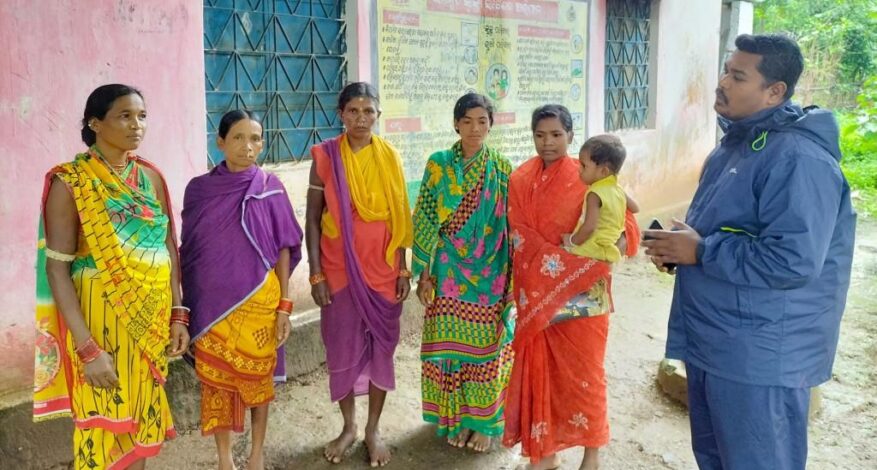
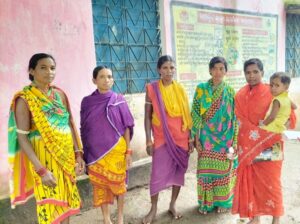 The community and citizen leader of Patiapadar is Dharmendra, a 25-year-old farmer. He has actively engaged in identifying the numerous challenges faced by the villagers and working towards potential solutions. Dharmendra expressed his concerns, stating, “The residents of this village encounter several difficulties, ranging from an unstable income to the inability to access government schemes and policies. These circumstances have kept the people of this village in isolation. Witnessing the struggles of the villagers, I have always aspired to make a positive difference for them. My opportunity to do so arose through CYSD when I became a community leader.”
The community and citizen leader of Patiapadar is Dharmendra, a 25-year-old farmer. He has actively engaged in identifying the numerous challenges faced by the villagers and working towards potential solutions. Dharmendra expressed his concerns, stating, “The residents of this village encounter several difficulties, ranging from an unstable income to the inability to access government schemes and policies. These circumstances have kept the people of this village in isolation. Witnessing the struggles of the villagers, I have always aspired to make a positive difference for them. My opportunity to do so arose through CYSD when I became a community leader.” However, Dharmendra’s primary focus is on addressing the central issue: preventing villagers from leaving in search of livelihood opportunities elsewhere. He expressed his goal, stating, “I aspire for our people to remain in the village, earn their livelihood here, and actively contribute to the village’s development. My aim is to assist them in creating sustainable livelihood opportunities that provide a stable income throughout the year.” Dharmendra’s determination to enhance the quality of life for his fellow villagers reflects his commitment to fostering lasting positive change within the community.
However, Dharmendra’s primary focus is on addressing the central issue: preventing villagers from leaving in search of livelihood opportunities elsewhere. He expressed his goal, stating, “I aspire for our people to remain in the village, earn their livelihood here, and actively contribute to the village’s development. My aim is to assist them in creating sustainable livelihood opportunities that provide a stable income throughout the year.” Dharmendra’s determination to enhance the quality of life for his fellow villagers reflects his commitment to fostering lasting positive change within the community. With very little time to spare, Dharmendra needed to act quickly. He approached the ASHA worker in his village to initiate the birth certificate application process, only to discover that the baby’s birth had not been officially registered. Dharmendra recounted, “The baby’s health was deteriorating rapidly, and time was running out. I immediately initiated the process to obtain the baby’s birth certificate. With the assistance of a legal advocate, we obtained an affidavit. This was submitted to the district collector’s office, and the process had begun. Within two weeks, the birth certificate was granted. It was then issued at the hospital, and the operation was successful. The baby is now healthy and hailing. I am incredibly grateful to have been part of a life-saving endeavor,” Dharmendra expressed.
With very little time to spare, Dharmendra needed to act quickly. He approached the ASHA worker in his village to initiate the birth certificate application process, only to discover that the baby’s birth had not been officially registered. Dharmendra recounted, “The baby’s health was deteriorating rapidly, and time was running out. I immediately initiated the process to obtain the baby’s birth certificate. With the assistance of a legal advocate, we obtained an affidavit. This was submitted to the district collector’s office, and the process had begun. Within two weeks, the birth certificate was granted. It was then issued at the hospital, and the operation was successful. The baby is now healthy and hailing. I am incredibly grateful to have been part of a life-saving endeavor,” Dharmendra expressed.